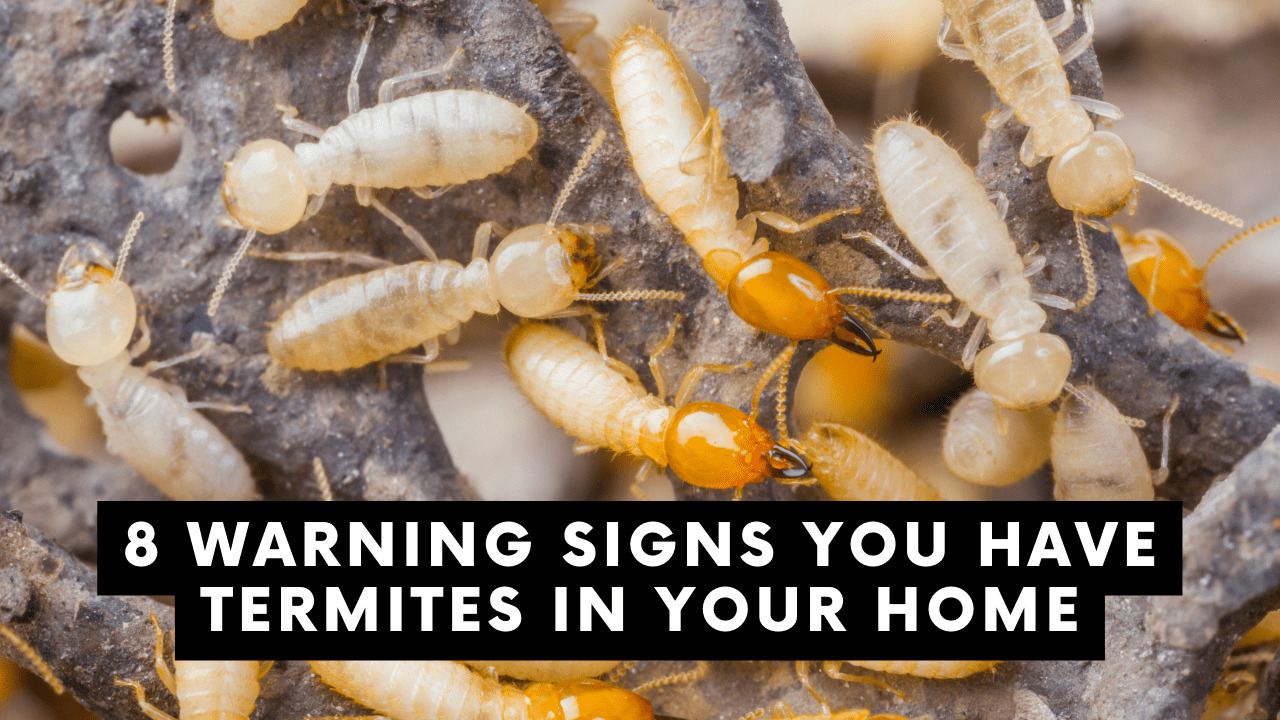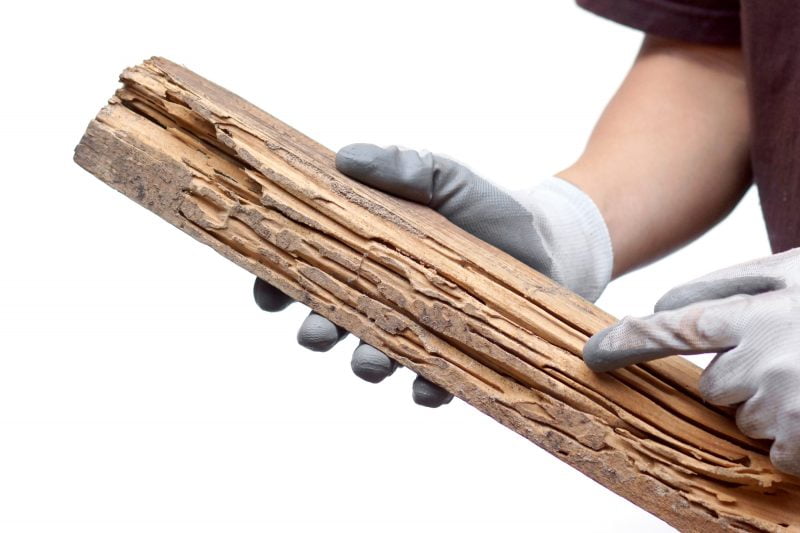Termites are the silent destroyers. They chew away in virtual silence, and you often don’t realize you have a problem until they’ve compromised your structure.
They could be working right now, chewing away at footers on your property.
Thankfully, if you know what to look for, you can stop termites before they cause significant structural damage. Keep reading to learn the major signs you have termites.
Table of Contents
1. Wood Damage
Termites scrape and gnaw wood, not just chewing it but consuming it. They don’t necessarily want the wood but rather the cellulose in it. They then use their feces from that wood to build their homes in whatever structure they’ve chewed on.
Thus, if you notice wood damage, you should automatically suspect termites. The wood will blister or have small holes in them that look like something gnaws on it. If termites feed on your subfloor, it will look like it has water damage.
Check areas behind surfaces such as the areas behind your walls and floors. Termites will leave long grooves in the wood, which will eventually weaken. This damage will lead to structural damage.
You’ll know you have damaged wood because it will have a hollow sound to it when you knock on it. The termites have most likely left a honeycomb pattern in the wood and left it hollow.
2. Paint Problems
Look for bubbling or uneven paint. This signals a buildup of moisture caused by either water damage or termites.
You may also find wood damage outside of your house. Look for blistering pieces of siding and wood. Even natural wood such as trees can suffer damage from termites, so look for bare, exposed wood that is rotting.
3. Tight Windows and Doors
Tight-fitting windows or doors also indicate a problem. Termite excrement or mud heats moisture and heat, causing the wood to swell. When this happens, you will have some tight windows and doors.
4. Wing Piles
In addition to their bite marks on wood, termites leave biological evidence behind. If you know what you’re looking for, you can quickly and easily spot a termite invasion.
When termites swarm out of their nests to me, they begin looking for a place to start a colony. As they land, they twist off their wings because they don’t need them. They’re home.
You can find these wings near points of access in your houses such as closed doors and windows.
5. Mud Tubes
To survive, termites need a specific temperature and humidity level. They create the perfect environment by tunneling through the mud that meets their food structure, be it your house or a tree. The tunnels block out cool, dry air and create the ideal environment where termites can thrive.
Thus, you should suspect a termite invasion if you find pencil-sized tunnels in the mud going up to your home.
6. Termite Droppings
Termites chew through wood and then use their excrement to make a house. The excrement looks like a mound of sawdust or coffee grounds. These pellet mounts indicate that you may have dry wood termites.
The basic cost for termite treatment pales in comparison to the cost of replacing the wood that these little guys can cause. Termite toppings are a tell-tale sign of an infestation.
Look for the pellets wherever you have wood. Start with your attic. If you see a pile of droppings or frass, then call a pest control company that specializes in termite treatments.
7. Head Banging
Sometimes, if you listen closely, you can hear termites banging their heads against the wood or sharking their bodies. Termites will make noise to signal the other termites that danger is near.
Headbanging will sound like quiet clicking coming from the walls. So listen carefully for this sign of termites.
8. Swarms
Termites rarely swam. They will do this before they sustain much damage, so if you see a swarm either indoors or outdoors, you will have a termite infestation soon.
Call a termite expert if you see a swarm. The damage hasn’t happened yet, but if you wait too long, you risk significant structural damage.
Know Where To Look
Termites work quietly, often unnoticed because you do not know where to look. Now that you know the signs of a termite, you should know where to look.
- AC Units: Termites like moist e environments like those that air conditioning units provide.
- Roofs: Regardless of your type of roof, termites use them as an entryway to your property. Moist, cracked roofs provide the perfect entry.
- Wooden furniture and flooring: Termites love any type of wood, so look beyond your walls. To minimize the termite’s opportunity, move your furniture away from your walls, and inspect your floors regularly.
Examine these places carefully. Do not forget to look at wood sources outside. Termites have no preference for types of wood, so look for rotting wood in your siding as well as any wood lying around your property.
Warning Signs You Have Termites
Now that you understand the signs you have termites, you can do something about your problem. Call a pest expert if you discover any of the signs or even hear the termites in your walls.
You should also do some research on the area where you live. Are termites a common problem in your community? What can you do to mitigate your risk?
A pest expert will help you identify and treat the problem before it causes significant damage.
Did you find this article helpful? If so, keep visiting our site. We aim to provide you with the most helpful articles for home ownership today.






